
Flipping in the Golf Swing? Understand and Utilize the Dynamics
“I flipped it, that was a crap shot” has to be in the hall of fame for the most commonly heard phrases on any golf course. Understanding flipping in the golf swing — what causes it and how to manage it—is a cornerstone of improvement and long-term development. Here is a video post about it if you’d rather check that out.
I’m heavily biased toward the old-school movements because of its simplicity and overall feel. If you follow this path, the phrase “I flipped it, that was a crap shot” is actually a huge misunderstanding. In a more flowing, swinging-style motion like the Big Arc Swinger pattern, you are supposed to flip. Most don’t “flip enough” and hence don’t utilize the potential of the release. The key is to understand how to continue the hands momentum so that the flip doesn’t turn into a scoop.
A completely non-flipping golf technique has emerged over the last 20 years. I call this the baseball swing, and it’s not what I’m discussing in this article.
This article is a part of my FMM Swing Academy and favors the Big Arc Swinger pattern harnessing the inner layers of e.g. Nicklaus, Watson, Woods or why not the modern Scheffler.
Flipping in the Golf Swing – Hand Braking Mechanism?
How do you actually get power to the golf ball in a golf swinging motion? Is it through brute force? Is it through pushing the hands or actively extending your trail hand? Whatever you do it comes down to centrifugal force (CF) in the club.
The better you become at stimulating and accelerating CF the more power you get. The more skilled you become in these two events of stimulating and accelerating the more control you get as well (through your wrist knowing what to do). Stimulation of centrifugal force is that you release power out early. Acceleration is represented by the hands acting as a braking mechanism (centripetal counter part if you wish to get technical) to further stimulate CF.
In other words, flipping the golf club is an absolute must since it’s actually the natural braking mechanism for the hands which in turn allows centrifugal force to be released fully. And yes, this goes straight against most of the baseball swing looking swing advice that circle around on social media, but then again, if you’ve read anything from me or regarding the FMM Swing you know that I teach the old school swinging motion that the greats used. In this motion flipping is, from one perspective, basically the golf swing.
Thinking that you shouldn’t flip is the single most power destroying thought in golf. You can read more about power if you wish.
Flipping Right and Flipping Wrong
Most golfers struggle to execute the flip properly because their clubface isn’t shut enough to allow it. In other words, their clubface remains too open too late in the downswing, acting as a complete athletic blocker. If the face is too open, your natural athletic instincts won’t let you flip aggressively—because doing so would send the ball twenty degrees right. (Read more about clubface closure here.)
This leads to a chain reaction. Instead of releasing the club naturally, your body compensates by forcing you out of posture (early extension) and breaking the wrists the wrong way. This results in excessive clubface rotation and poor wrist angles at impact. From here, two common patterns emerge:
- You become an over-the-top slicer.
- You become a stuck-behind two way misser but mostly hook player.
But is there another way?
What if you avoided the “too open, too late” problem altogether? There are two alternative solutions:
Version 1
The standard YouTube approach—shut the face early (relative to spine angle) in the backswing and maintain that positioning throughout the swing. This actually takes the forearm rotational element somewhat out of play but also forces a slight hand push and right lean to compensate. This flipping happens but a bit later than a completely natural flip.
Version 2
The method of the old greats—Snead, Nicklaus, etc.—who used the club’s natural movement in the downswing arc to close the face automatically. One of golf’s best-kept secrets.
Both versions solve your clubface openness issue is the key to unlocking a powerful release. Once you get this right, flipping (or releasing the club) becomes one of your biggest power sources.
Controlling the Flipping – The Key to Great Golf
What I’m about to explain is basically the difference between a 4-handicap and a +4-handicap.
If you’re a golfer who actually flips, it means you have access to power. If you’re a golfer who knows how to lead that power without creating chaos at impact, the world is your oyster. Let’s revisit the two versions I outlined earlier:
Version 1: The Controlled Approach
- Close the clubface in the backswing (relative to your spine angle).
- Extend your trail arm through the downswing.
- Rehinge through impact.
What I’m describing here is essentially a MORAD-inspired protocol from the 90s. You preset the clubface position in the backswing and control the strike through a precise trail-arm extension (ensuring extension happens after the ball). You also rehinge the wrists post-impact to let centrifugal force do its job.
This method is elite-level golf—just look at Tommy Fleetwood. It’s structured, stable, and repeatable. While I respect its effectiveness, it’s not my personal favorite, since it demands conscious thoughts in parts of the golf swing where it’s almost impossible to “act”.
Version 2: The Natural Big Arc Swinger Release
- Send everything out into the arc (basically away from the target) to provide nice base speed. The just let go of grip pressure. This makes gravity kick in and allows the club to start its closing mechanism early enough (most golfers have a too open face too late).
- I do this until I properly hook the ball (on a trackman, for instance look for 1-2 inside path with negative 2-3 face to path relationship). This ensure that I’ve gotten the centrifugal force out.
- Instead of trying to control closure continue the hands momentum and you’ve efficiently taken out most blade control issues. (And yes, there’s more blade control to be had with the proper training. Also more power if you move your hands centripetally)
This version works with the club’s natural forces instead of fighting them. The intentional upwards motion maximizing acceleration in a relaxed state. It feels almost like magic. And the best part? You can train this in a month if you learn to harness the club’s dynamic power as the driving force.
Summarizing – Flipping in the Golf Swing
Both versions produce a stable face-to-path relationship through impact. And acquiring this stability is the key to improving your ball-striking consistency—*it’s the difference between hitting 8-9 greens per round and hitting 12-13+. *
I teach Version 2 because of my fascination with the old-school swing and my personal experience with it being the most effortless and effective motion I’ve ever used. Version 1 (the MORAD-style method) is more difficult to train and, in my opinion, doesn’t flow as naturally.
Wish to get back to the The FMM Swing Academy?
More FMM Project Articles
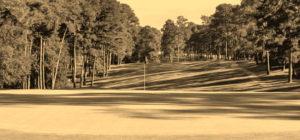
The Swinging Protocol – In the Core of all Great Golfers?
I have a special interest in the golf world, and that is to understand what actually built the best swings of all time. Not just how they look, but what truly built them. What…

A Powerful Golf Swing Clips It – Stop Chasing Divots
We are all performing golf swings based on inner images, muscle memory, and athleticism. These different subconscious images will shape how we perform our motion. A powerful golf swing clips it in a shallow,…
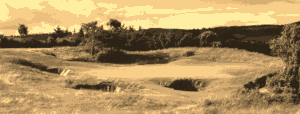
Perform Your Backswing in Front of Yourself – The Vertical Lift
The backswing might be the most difficult part of golf. Do it right, and while there are no guarantees of a perfect result, do it wrong and you’ve almost certainly ruined your chances of…
Some General Swing Tech Posts (with Videos)
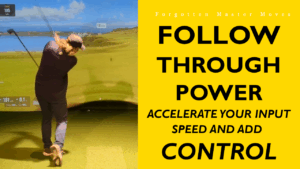
Follow Through Power In Golf? Accelerate & Gain Control
Follow Through Power In Golf? Accelerate & Gain Control The follow through is truly the bread and butter of consistent, adequately powerful golf. It puts you on top of your motion if you will…
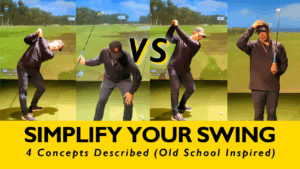
Jack Nicklaus’s Swing – The Inner Layer of his Motion
Jack Nicklaus’s Swing – The Inner Layer of his Motion Golf history is full of great swings, but few have stood the test of time like Jack Nicklaus’s. His technique wasn’t just effective —…

Low Hands In Golf Relationship to Lie Angles, Power and Accuracy
Low Hands In Golf Relationship to Lie Angles, Power and Accuracy Having your hands relatively lower at impact is a major success factor for reliant and efficient golf. It’s influenced by your equipment and…
General Article Collection Pages

All Articles Library – All Creations in One Place
Everything I’ve created over the years. You have different filterings according to the list below. Wish to watch Youtube videos instead? Then click here to open Wish to visit my Skillest Profile (coach app)?…

DIY Swing Change – Advice on How to Successfully Change
Do It Yourself, DIY Swing Change, is what has driven me the last decade in my golf swing development. The absolute enjoyment of figuring out a swing change myself. To all of you out…
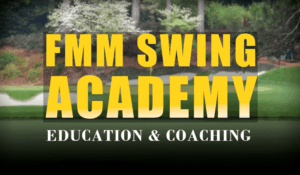
FMM Swing Academy – 3 Release Styles. 3 Swing Patterns
FMM Swing Academy Almost everyone who plays golf wants to get better and tries to get better, but doesn’t get better. Why? Let’s look at what differentiates a good golfer from a not-so-good golfer….

Golf’s Best Systems – Much Needed Golf Technique Context
I categorize golf motion styles into systems for the sake of clarity and understanding. No golfer fits perfectly into a single system, but without a structured framework, you’re essentially shooting in the dark. These…
Old School General Articles
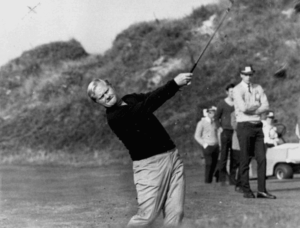
Why Jack Nicklaus Swing Work – Free of Modern “Rules”
Most people have Ben Hogan as their swing god, and sure, he’s awesome, but my personal favorite will always be Jack Nicklaus Swing. The Golden Bear. It’s the simplicity and effortless feel of it…
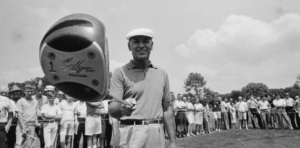
Ben Hogan Swing Rebuild – The Breakthrough That Changed Golf Forever
Nothing in golf quite compares to Hogan’s dominance in the 1940s and 1950s. The Ben Hogan swing rebuild, which he eventually shared through Five Lessons and other insights, shook the golf world—but without the…
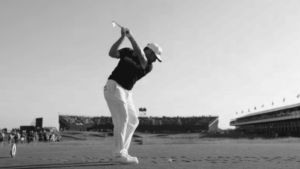
Old School Swinging Elements on Tour – A Modern Case Study
Modern top tier golfers definitely display old school swinging elements of the old greats. These swing styles are making their way back to the leaderboards today. How to spot Old School Swinging Elements? Once…